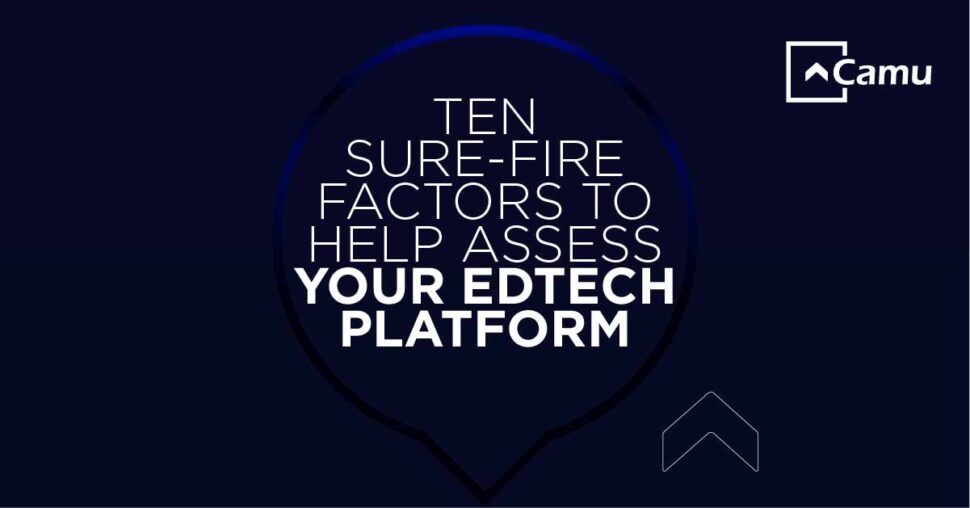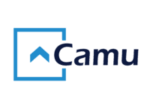
10 Sure-Fire Factors to Help Assess Your EdTech Platform
Looking to appraise the suitability of your e-learning tool?
Interested in how you can satisfy learners’ needs and learning outcomes with your campus management solution?
Eager to understand the software you’ve just appointed?
Exploring the feasibility of potential vendors?
Well, we’d like to gift you a simple framework to make this task seamless.
Camu turned to the smart rubric provided by Educause, a non-profit association, whose mission is to advance higher education through the use of information technology.
By understanding this model, reorganizing and building upon it to meet our unique perspective, we aim to provide a holistic breakdown of evaluation criteria for institutions.
Here are 10 factors to delve into, as a higher education institution, when critiquing your EdTech solution.
1. Functionality: The most basic thing to consider when evaluating the quality of an EdTech solution, is the level of utility it provides. Institutions must therefore determine whether the platform or tool is meeting the intended purpose, which is, to augment and facilitate education. Whether online or on-campus, the system must be adept at managing primary functions such as lecture streaming, automated attendance, and online assessments.
2. Technicality: The integral components of e-learning implementation include internet access, hardware, software, and computer availability. Naturally, satisfying this set of criteria is a prerequisite for teaching and learning. Institutions must ask themselves, “can students effectively use the e-learning tool on a desktop or laptop computer if they have a standard, up-to-date operating system and/or browser?”.
3. Accessibility: An EdTech solution may be top of the line, but if it’s not accessible, it goes to the end of the line. When we say accessible, we don’t just mean in terms of institutional cost, we also mean with respect to addressing the key requirements of a diverse set of users and including a broader understanding of student capabilities. The less equipment needed, the more accessible the tool becomes to a wider audience, regardless of socioeconomic, geographic, or environmental factors.
4. Ease of Use: An EdTech solution is only as smart and as good as the ability of its users to navigate it successfully. When a platform is inflexible, complex in design, challenging to navigate, and behaves in unexpected ways, it is likely to be perceived negatively by faculty and students. In contrast, a tool tends to be more positively met when it feels intuitive, easy to use, and additionally, offers guidance through user engagement.
5. Scalability: It’s imperative for an EdTech solution to be flexible, whether it is accommodating large class sizes or supporting small group work. Scale, therefore, focuses on the tool’s affordances to govern the size as well as nature of the classroom environment. Institutes must look to invest in a cloud platform with elastic load balancing and auto-scaling architecture, in order to provide sub-second response time to users.
6. Synergy: As an institution, you must be capable of efficiently and effectively managing multiple departments and processes, from the back office to the front end. Enabling complete academic governance is no easy feat. This is why it’s crucial to evaluate your EdTech solution based upon how collaborative and integrated it is. Does it have a unified LMS and SIS? Can it support multiple education models such as OBE and CBCS? Can you mine data for accreditation purposes?
7. Innovativeness: Innovation, incremental and radical, is what sets one EdTech platform from another. While the former refers to small design updates or customizations like introducing a chat feature, the latter refers to newer technologies that bring about a significant change such as cloud-based applications and blockchain. When assessing your solution, do consider what features and attributes it possesses and what problems it is solving for users.
8. Mobile Design: With the rise of online education and impact of e-learning, comes the inevitable need of operating a web and mobile interface. Instructional methods that deliver content using mobile technology will have the advantage over those who rely solely upon web-based applications. When assessing an EdTech solution, examine its mobile design. Having sound mobile architecture enhances teaching quality and student learning through instant connectivity.
9. Data Protection: When reviewing an EdTech solution for its merits towards instructors and learners, an institution must not forget to recognise the potential risks involved. When it comes to data protection, the primary concerns are related to personal information and intellectual property. It is necessary for institutes to be vigilant in securing student data and teacher data, at all costs. Apart from privacy and ownership, aspects such as archiving, saving, and exporting data also come into play.
10. Learner Analytics: An EdTech solution, with its data analytics functions and performance metrics, can empower students to understand their strengths and weakness and help faculty members discover newer opportunities for teaching. Mining data for insights helps pinpoint areas that require immediate course correction, thereby guiding an institute to better gauge trends for improved academic performance.
Whether you are an institution evaluating your current EdTech vendor or exploring potential EdTech vendors, this everyday framework with 10 evaluative criteria will assist you in doing so.







